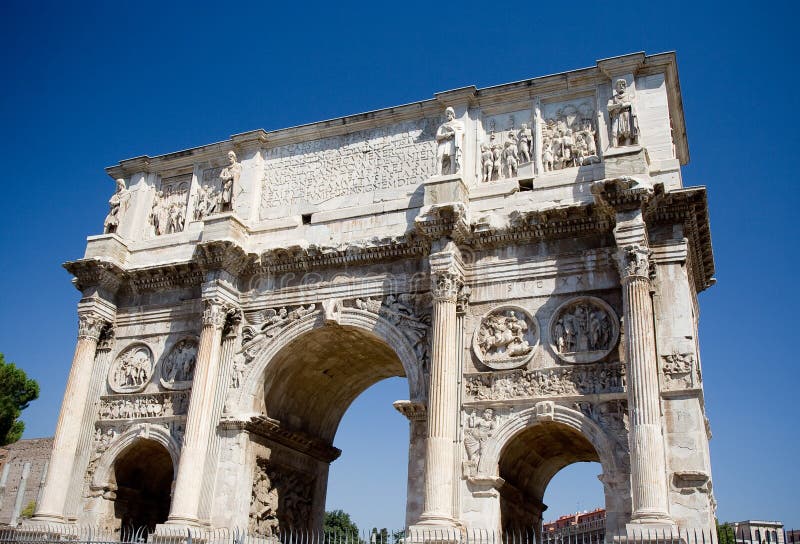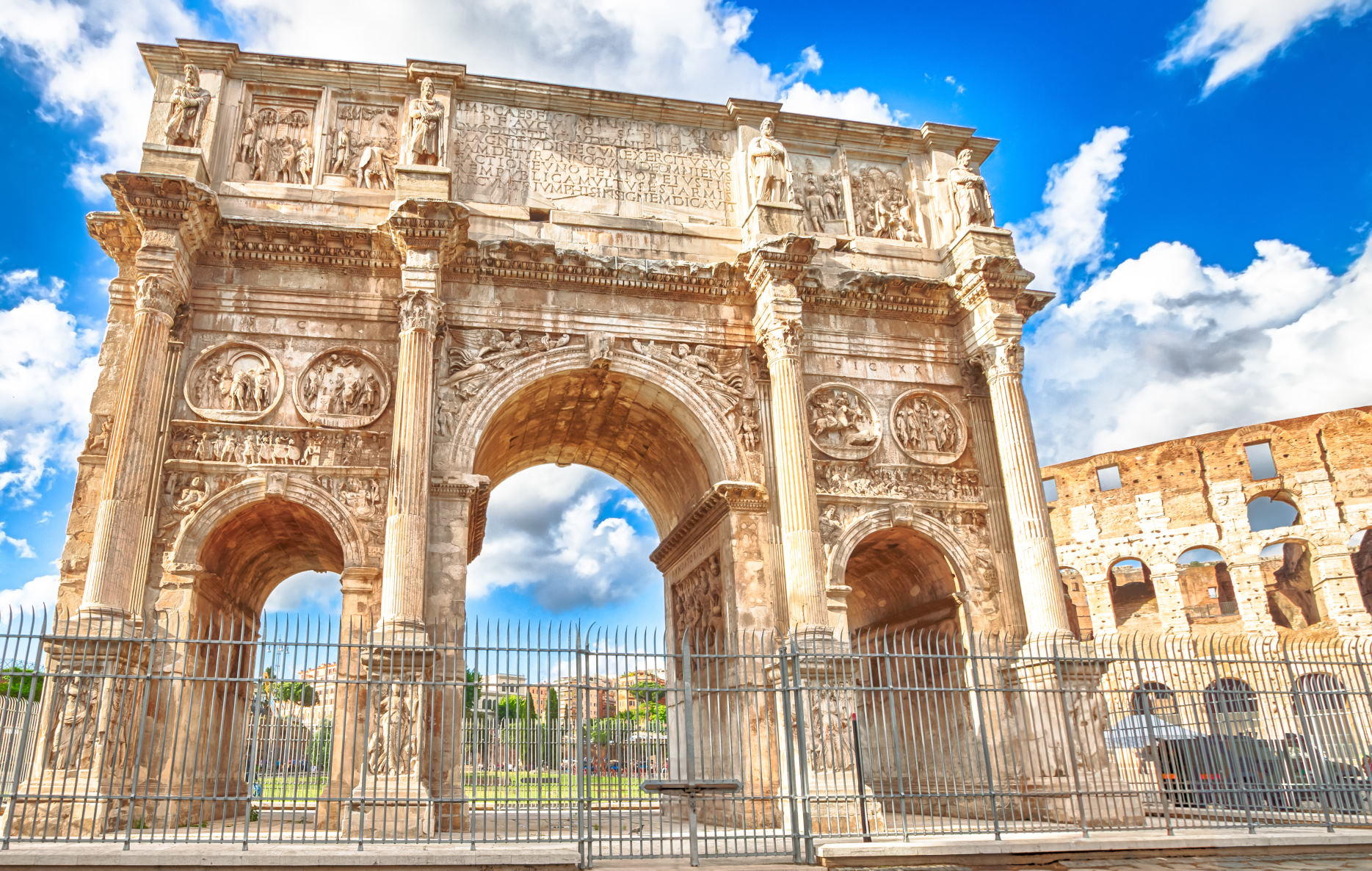
The general layout of the main facade is identical on both sides of the arch, consisting of four columns on bases, dividing the structure into a central arch and two lateral arches, the latter being surmounted by two round reliefs over a horizontal frieze. These were taken from an unknown monument erected in honour of Marcus Aurelius. Flanking the inscription on both sides are four pairs of relief panels above the minor archways, eight in total. Above the central archway is the inscription, forming the most prominent portion of the attic and is identical on both sides of the arch.

On the top of each column, large sculptures representing Dacians can be seen, which date from Trajan. This route started at the Campus Martius, led through the Circus Maximus, and around the Palatine Hill immediately after the Arch of Constantine, the procession would turn left at the Meta Sudans and march along the Via sacra to the Forum Romanum and on to the Capitoline Hill, passing through both the Arches of Titus and Septimius Severus. This route was that taken by the emperors when they entered the city in triumph. The location, between the Palatine Hill and the Caelian Hill, spanned the ancient route of Roman triumphs (Via triumphalis) at its origin, where it diverged from the Via sacra. Constantine then left Rome within two months and did not return until 326. However, Constantine had actually entered Rome on 29 October 312, amidst great rejoicing, and the Senate then commissioned the monument. On these occasions they also said many prayers and renewed both spiritual and mundane vows.
Arch of constantine two good emperors series#
Not only did the Roman senate give the arch for Constantine's victory, they also were celebrating decennalia: a series of games that happened every decade during the Roman Empire. The arch, which was constructed between 312 and 315, was dedicated by the Senate to commemorate ten years of Constantine's reign (306–337) and his victory over the then reigning emperor Maxentius (306–312) at the Battle of Milvian Bridge on 28 October 312, as described on its attic inscription, and officially opened on 25 July 315. Though dedicated to Constantine, much of the sculptural decoration consists of reliefs and statues removed from earlier triumphal monuments dedicated to Trajan, Hadrian (117–138) and Marcus Aurelius (161–180), with the portrait heads replaced with his own. The three bay design with detached columns was first used for the Arch of Septimius Severus in the Roman Forum and repeated in several other arches now lost. The arch is constructed of brick-faced concrete covered in marble.

Dedicated in 315, it is the largest Roman triumphal arch. Situated between the Colosseum and the Palatine Hill, the arch spans the Via Triumphalis, the route taken by victorious military leaders when they entered the city in a triumphal procession. The arch was commissioned by the Roman Senate to commemorate Constantine's victory over Maxentius at the Battle of Milvian Bridge in AD 312. The Arch of Constantine Archo di Costantino, is a triumphal arch in Rome dedicated to the emperor Constantine the Great.


 0 kommentar(er)
0 kommentar(er)
